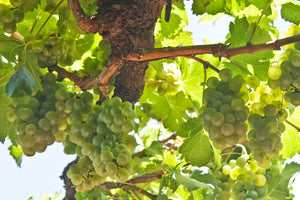Müller-Thurgau is a white wine grape variety primarily grown in Germany. It is a crossing of Riesling and Madeleine Royale, created in 1882 by Dr. Herman Müller of Thurgau, Switzerland. In Germany, Müller-Thurgau is often blended as part of the Liebfraumilch category or with Morio-Muscat. However, in the 1980s and 1990s, commercial tastes changed and the variety became massively unpopular, leading to much of Germany's Müller-Thurgau being pulled up and replaced with higher-quality varieties such as Riesling and Silvaner. Müller-Thurgau played a significant role in rebuilding the German wine industry after World War II. It was an easy and productive vine that helped reinvigorate viticultural production.
In the 1950s, Müller-Thurgau was successful in New Zealand, but as Sauvignon Blanc emerged, Müller-Thurgau was replaced. Varietal Müller-Thurgau wines often have sweet peach aromas, low acidity, and a range of fruity flavors. They are almost always best consumed young, with the exception of those in northern Italy where the combination of old vines and steep, elevated vineyards makes for more serious expressions with greater aging potential. The variety is also grown in Switzerland, Hungary, England, the Czech Republic, and Luxembourg. It is also planted in Austria but to a limited extent.

